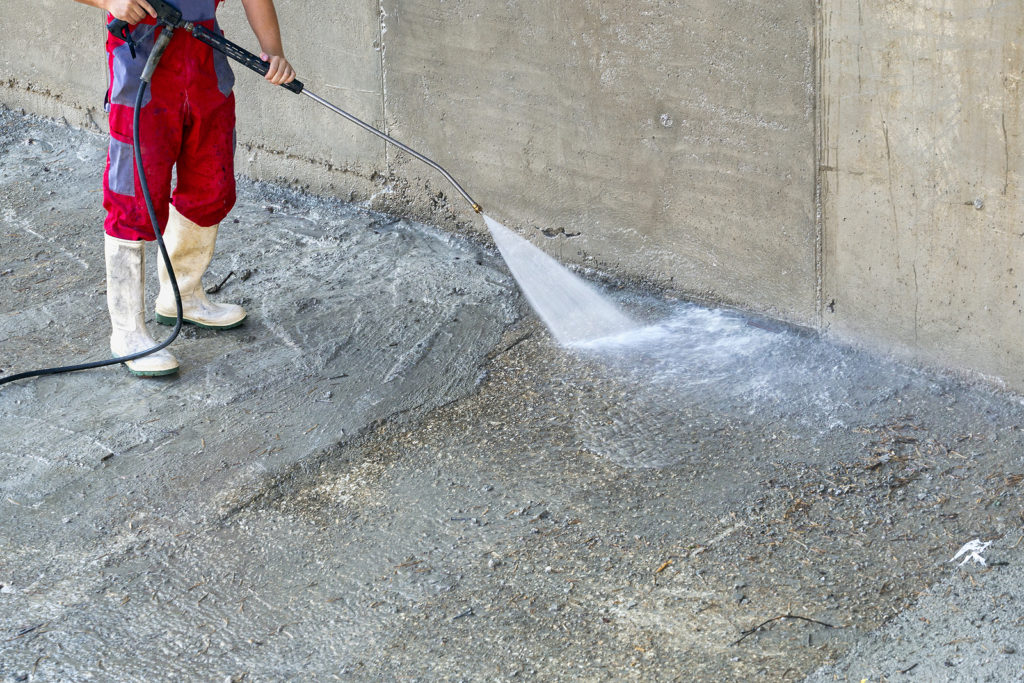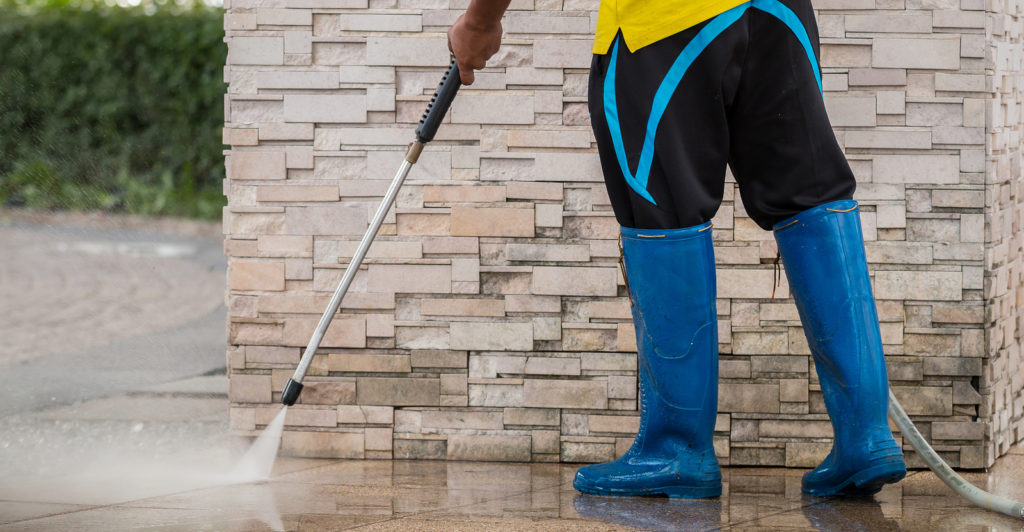Water stops and other moisture barriers are commonly installed beneath concrete foundations; however, these can wear out and deteriorate over time. They can also become defective or break under extreme conditions. In the case that water and moisture get into the foundation of concrete walls or floors, there is a chance that both mildew and fungal growth can occur. No one wants mold growth anywhere on their properties, so when it becomes apparent, immediate action is required. Stopping mold growth in its tracks can greatly reduce the need for costly repairs, restorations, and reconstruction.
Continue reading and learn how to remove mold and mildew from concrete floors, walls, and other surfaces.

Mold Removal Process for Concrete Surfaces
The process of cleaning mold off of concrete is fairly straight-forward and therefore easy; however, it does require some initial grunt work. Be prepared to sweat a little when it’s time to scrub mold and mildew out of concrete. It doesn’t require a lot of tools either; simply locate a hard-bristled scrubbing brush, household bleach, clean water, and protective cleaning gloves. Combine the bleach and cold water (1 part bleach to 4 parts water) and liberally apply the solution to the affected area. Once the area is saturated, use the scrubbing brush to powerfully brush and rub out the mold from the concrete.
Once you have finished scrubbing in this solution, allow it to set it for a few hours; longer if the mold is extensive. Finish with a thorough rinse using fresh clean water. Use room-temperature or cold water so to not promote future mold growth. Heat, moisture, and shade is all it takes for mold and fungus to form. It is best to use a power washer to rinse the bleach solution away because the pressure of the water works well to thoroughly rinse away the remaining particles.
For Very Serious Mold-Damaged Pavements
If you prefer to not handle bleach or concoct your own solution, you can choose to purchase a store-brand mold-killing detergent. Although store-bought, they provide the same results and require the same steps. For severe cases of mold, it is best to outsource professional concrete repair or replacement services. If you want great pavements all year long, be sure you choose a certified pro to install, repair, and protect your concrete.
Are you looking for commercial pavement services in Indiana? Contact ACI Asphalt and Concrete at 317-549-1833 to speak with one of our licensed paving contractors about your Indianapolis, Indiana commercial concrete repair or installation needs.
You Might Also Enjoy:
The Benefits of Commercial Concrete Curbing
Causes and Cures for Concrete Cracks
Can You Pave Asphalt Over Concrete?


